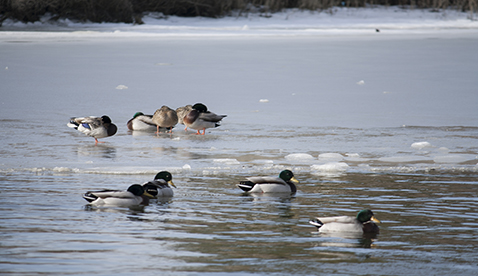ANNAPOLIS-Amidst statewide debate about how to fund restoration of the Chesapeake Bay, a report released Thursday shows that many local and national efforts to curb pollution have had a positive effect on the watershed.
The New Insights report was conducted by the Chesapeake Bay Program and looked at more than 40 case studies in the Chesapeake bay watershed examining whether practices aimed at reducing nutrients in the water worked.
According to the report, wastewater treatment plant improvements, reductions in nitrogen released in the atmosphere and reducing agricultural land runoffs were three of the most effective long-term practices for water quality improvement.
This was the first time the program had looked at that many sites and monitored data from before many pollution controls, or best management practices, were implemented, said Nicholas DiPasquale, Chesapeake Bay Program director.
Some of the data analyzed in the report was from as far back the mid-1980s, said Bill Dennison, an author of the report and vice president for science applications at the University of Maryland Center for Environmental Science.
While some of the information in the study was expected, DiPasquale said the research team did not expect as high a reduction of airborne nitrogen as the report showed.
Some of the reasons for the improvements were regulatory programs aimed at reducing air emissions from power plants, legislation like the Clean Air Act and an increase in fuel-efficient automobiles.
He said the air quality in other states can impact the Chesapeake bay watershed because west to east winds from states like Ohio and Michigan can affect the nitrogen content of Maryland’s air which then can impact the state’s waters through rain.
But the report also highlighted efforts by Marylanders using local solutions to clean up the watershed.

The town of Centreville, on the Eastern Shore, used several best management practices, such as stormwater wetland ponds, manure management and using cover crops to reduce winter soil erosion.
The study showed that because the town aggressively implemented many of these practices, there was a significant reduction of phosphorous and nitrogen in two tributaries of the Corsica River.
While the study showed several positive signs for water quality improvement around the state, population growth – which causes intensified land use – remains a major challenge, research team members said.
In addition, while many best management practices have short-term results, some, especially those involving groundwater, have a lag time and patience is required in order for the benefits to be realized, said Scott Phillips, Chesapeake bay coordinator for the United States Geological Survey.
Dennison said the study helps show Marylanders that efforts across the state and the country have led to some water quality improvements.
“We’ve got demonstrable evidence that shows that we can improve our air and water and land, and it’s going to work, so hang in there,” Dennison said.
Phillips said that he thinks that because the study shows a summary of what is working, it could potentially lead to better decision-making regarding bay restoration. It could also lead to the application of effective practices in other parts of the country, such as the Gulf of Mexico.
Research team members said the report will help restoration efforts because it shines a light on what is working.
“We have a good idea of the kinds of practices that need to be implemented but there are some that need to be more effective and we want to try and focus on those,” DiPasquale said.


You must be logged in to post a comment.